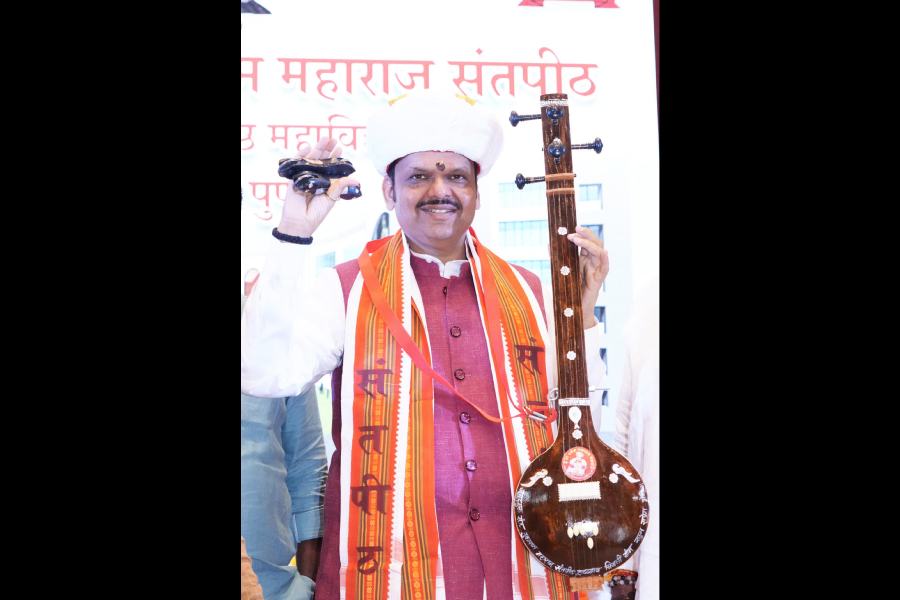 |
| War and peace: Capoeira combines martial arts with balletic moves |
On weekend mornings, you can see people doing it at Central Park in New York. But you will not be able to tell if it is a martial art or a dance. A centuries-old Brazilian dance that combines martial arts with the pulse and energy of a carnival party, ?capoeira? (cap-WAY-rah) is a bit of both. And it has kicked and twisted its way to the West from South America, challenging gym rats constantly looking for new trends. It?s popping up in trendy gyms in New York City, to public parks in Utah, Nashville, San Diego and Vancouver ? all abrim with burgeoning capoeira communities. Capoeira classes can be found within Nottingham University and at some YMCA branches in the UK. The British capital even has a London School Of Capoeira at Leeds Place (www.londonschoolofcapoeira.co.uk), and the Greenwich Dance Agency at Greenwich Village runs a range of classes in capoeira.
Capoeira is said to be approximately 500 years old and the only surviving martial art native to the New World with aesthetics and movements drawing on its rich African heritage. In Portuguese, the language of Brazil, capoeira is referred to as a jogo, meaning a game, not a fight. Capoeira first came about in Brazil, where slaves from several different African cultures were thrown together. The slaves combined fighting, music, and dance elements of their respective cultures. A theory about its origin is that the African slaves developed the moves to convince their captors they were practising ritual dancing when really they were developing a fighting technique. Of course, as soon as the slave owners found out, it was made illegal. Confined to street gangs, it thrived underground until it was popularised fairly recently.
The dance is actually even harder to do than to pronounce. In a recent feature on BBC?s website, the writer says, ?It was like doing a combination of acrobatics, Russian dancing and high-speed twister.? An intense physical and mental challenge between two ?players?, capoeira is characterised by deceptive kicks, sweeps, trip-?em-ups, head butts, and elbow and knee movements. Enthusiasts say it?s impossible to be bored in class. ?You trim the fat. You play a new instrument. You learn a new language... And that?s just the first 20 minutes,? says a New York enthusiast Brian Donnelly. Those first 20 minutes typically consist of calisthenics to raise the heart rate. The teacher, called the ?mestre?, then demonstrates a new skill, such as a kick-and-duck or a cartwheel. The movements have foreign names, but most teachers conduct classes in English. After a half-hour or so of practice, the class transforms the energy of the aerobics room into a vibrant and stirring pulse. The class forms a circle, called the ?roda? (HO-da), and beats drums native to Brazil and chants. The teacher plays a stringed instrument called the ?berimbau? and belts out songs in Portuguese that have easy-to-imitate refrains. The lyrics give verbal directions, praise and reprimands to two people who then spar inside the circle. Capoeira experts says that the live, interactive, fluid group energy is critical. It increases agility and strength, and is certainly more fun than running on the treadmill.
Fast tempos instigate games where the players throw fast, powerful kicks and blows at each other. Slower tempos prompt more balletic moves. Some of the movements may even remind you of street dance.
What else do I get out of it?
 |
For those who don?t merely want to dance
A world away from your aerobics class, capoeira will give you a cardiovascular workout.
Your mind and your body work together as you concentrate on anticipating your opponent?s next move. If you?re concerned with your couch potato status preventing you becoming a capoeira champion, don?t panic.
Being creative and inventive with your moves will keep your opponents on their toes. And you?ll be so busy learning and perfecting your moves, you won?t even notice your thighs toning. As well as increasing strength and agility, capoeira will boost you some nifty self-defence techniques.
Dress code: Loose white trousers and a white T-shirt are the traditional dress for capoeira, although some clubs do have a set uniform. There?s a grading system with a different-coloured belt representing each stage, similar to other martial arts like judo or karate.
For more info log on to: Capoeira Online; Planet Capoeira.
It?s much more fun
 |
 Dance is a favoured form of fitness training today. ?Anything that breaks the monotony is always welcome,? says Mrinalini Mukherjee of the hip gym and fitness club at Calcutta?s Sunny Park, Solace. ?And dance has always been popular, especially Latino-Afro forms.?
Dance is a favoured form of fitness training today. ?Anything that breaks the monotony is always welcome,? says Mrinalini Mukherjee of the hip gym and fitness club at Calcutta?s Sunny Park, Solace. ?And dance has always been popular, especially Latino-Afro forms.?
 |
 The benefits are many. Regular dance sessions will improve your stamina, build muscle strength, slow your heart rate, reduce cholesterol and help you maintain healthy bones. It?s also a great way to lose weight: 30 minutes of dancing will burn between 200 and 400 calories.
The benefits are many. Regular dance sessions will improve your stamina, build muscle strength, slow your heart rate, reduce cholesterol and help you maintain healthy bones. It?s also a great way to lose weight: 30 minutes of dancing will burn between 200 and 400 calories.
 Apart from the physical side, dancing is also great for improving co-ordination and concentration of the mind; learning dance sequences will actually help improve your memory. Dancing is a great stress release; a good dance will make you smile and laugh, leaving you exhilarated and inspired.
Apart from the physical side, dancing is also great for improving co-ordination and concentration of the mind; learning dance sequences will actually help improve your memory. Dancing is a great stress release; a good dance will make you smile and laugh, leaving you exhilarated and inspired.
 |
 Make sure you are adequately protected from any injuries. For instance, warm up properly or else you may end up with pulled muscles. If you follow instructions carefully, there should be a very low risk of injury from dancing.
Make sure you are adequately protected from any injuries. For instance, warm up properly or else you may end up with pulled muscles. If you follow instructions carefully, there should be a very low risk of injury from dancing.










